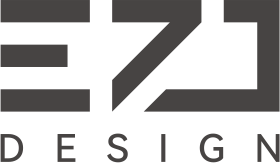What Are the New Trends in Hotel Wayfinding Signage for 2025?
A quick, practical brief for architects, procurement teams, and hotel operators planning renovations or new builds.
*Based on our Alibaba dataset review: 2024 Top-10 inquiries and H1-2025 bestsellers.
What global purchasing data is signaling
We analyzed Top-10 hotel signage inquiries (full year 2024) and H1-2025 bestsellers on Alibaba. Three patterns stand out:
1) Stainless steel is overtaking acrylic
- Share of stainless steel in inquiries rose from <40% (2023) to 68% (2024).
- Buyer feedback highlights durability, scratch resistance, and premium look & feel.
2) Illuminated plaques are now mainstream
- 4 of the Top-5 H1-2025 bestsellers include integrated LED illumination.
- Shift away from “corridor lamp + plain plaque” to LED-in-sign systems.
3) Compliance is a purchase prerequisite
- 55%+ of overseas inquiries explicitly reference Braille and/or CE, UL, RoHS, PSE.
- Accessibility and safety documentation is increasingly required at RFQ stage.
| Dimension | 2023 Snapshot | 2024–H1 2025 Trend |
|---|---|---|
| Material preference | Acrylic widely used for cost | Stainless steel preferred for durability & premium look |
| Lighting approach | Standalone corridor lamp + plaque | Integrated LED plaques dominate top sellers |
| Compliance signals | Occasional ask in RFQs | Braille & CE/UL/RoHS/PSE referenced in a growing share of RFQs |
Dataset scope: Alibaba hotel door/wayfinding signage category (global buyers), internal analysis.
Why these three trends make operational sense
Trend #1 — Stainless steel becomes the default
- Lifecycle cost: 2×+ lifespan vs. common acrylic in high-traffic corridors; fewer replacements.
- Environmental & climate resilience: Corrosion and heat resistant; stable finish over time.
- Guest perception: Metal textures align with premium brand standards and luxury interiors.
Trend #2 — Integrated illumination (LED-in-sign)
- Wayfinding performance: Higher night-time legibility; fewer “can’t find room” incidents.
- Energy & maintenance: LED modules are low-power and long-life; reduce separate lamp upkeep.
- Design cohesion: Cleaner corridors; fewer fixtures; unified visual rhythm along the hallway.
Trend #3 — Accessibility & safety compliance as standard
- Braille & tactile requirements: Raised lettering, contrast, mounting heights, and readable type.
- Electrical & materials certifications: CE/UL for electrical safety, RoHS for materials compliance, PSE for relevant markets.
- Risk management: Documentation readiness speeds approvals and mitigates retrofit risk.
Stainless steel plaque, integrated LED (warm/neutral options), tactile lettering + Braille, diffused front or edge glow, replaceable room-number module, low-voltage driver, documentation pack (photometrics, CE/UL, RoHS).
Frequently Asked Questions
Is stainless steel much more expensive than acrylic?
Unit price is higher, but total cost of ownership is typically lower. Stainless steel resists wear and discoloration, extending replacement cycles and reducing maintenance calls over 3–5 years.
Do illuminated plaques consume a lot of power?
Modern LEDs are highly efficient. Integrated signs often reduce corridor energy and maintenance versus separate lamps plus plaques, while improving legibility.
Is Braille required everywhere?
Accessibility policies vary, but international hotel groups increasingly standardize on tactile + Braille for permanent room and facility signs. It improves inclusivity and streamlines multi-region approvals.
Which certifications should I request from suppliers?
For illuminated signs: electrical safety (e.g., CE/UL as applicable), materials compliance (e.g., RoHS), and any local market approvals. Ask for a documentation pack at RFQ stage.
Any emerging ideas beyond these three trends?
Yes—modular number cassettes (for quick renumbering), recycled metal content, and smart integrations (linking doorbell/DND/MUR states) are gaining attention in new builds and renovations.




